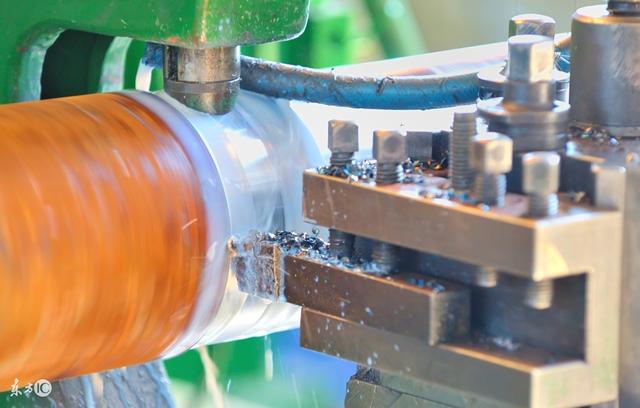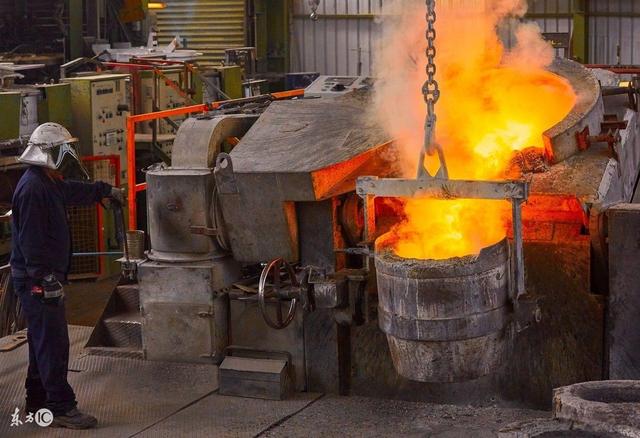1. What are the occupational hazards of titanium electrode forging operations The main occupational hazards of forging operations are high temperature and heat radiation. Older-type forging furnaces are open-type, and the temperature can reach 800-900°C, causing great harm. The widely used heating furnace is surrounded by closed conditions with good conditions, but the heat radiation intensity is also large when the furnace door is opened or the forgings are taken out. The forge also produces carbon monoxide and sulphur dioxide, but in a well-ventilated workshop, the concentration is generally not high. When using various forging hammers, strong noise and vibration can be generated. Forging operations are prone to equipment accidents and burns, and injuries due to iron slag splashing when hammering are more common. 2. What are the occupational hazards in heat treatment operations? The occupational hazard of heat treatment is high temperature, and various heating furnaces and salt baths are heat sources. With high frequency heating, there is a high frequency electromagnetic field. Cyanide vapors can escape when using a cyan bath. When using organic solvents for gas carburizing, organic solvent vapors such as benzene, toluene, and methanol can escape. 3. What are the occupational hazards in battery production? The main occupational hazards are lead smoke and lead dust. There are a large amount of lead fumes in melting lead, pouring shots and grids, and milling and milling (especially in discharging, loading and unloading and mixing) can lead to a large amount of lead dust. Plating, repairing and welding can also generate a large amount of lead dust. Lead smoke. The plate is formed by charging the dried lead plate into a sulphation bath with a specific gravity of 1.05 to 1.15 to generate sulfuric acid mist. Lead, casting, plate drying have high temperature and heat radiation. 4. What are the occupational hazards of titanium electrode paint production? Major occupational hazards in paint production are inhalation of various solvent vapors, of which benzene is the most toxic. Lead paint production, in the weighing, mixing, feeding process with lead dust habits, hard resin, vegetable oil tanning, irritating smoke and harmful gases (such as phenol, aldehydes). Raw lacquers, phenolic resins, epoxy resins, solvents, and grease can all cause dermatitis. 5. What are the occupational hazards of phosphate fertilizer production? Common phosphate fertilizers include phosphate rock, superphosphate, heavy superphosphate, calcium magnesium phosphate, etc. They are usually made of phosphate ore. Phosphorus ore is crushed, milled and sieved to produce a large amount of phosphorus-containing dust that can stimulate the skin to produce dermatitis, eczema and chapped skin. Phosphate ore contains about 7% of fluoride, which can produce a large amount of hydrogen fluoride, silicon tetrafluoride and sulfur dioxide in the process of mixing, forming, blast furnace melting, and discharging, which can cause irritation and chronic fluorosis in the upper aspirator. Heating and stirring and blast furnace melting all have high temperatures. 6. What are the occupational hazards in garment processing? The garment processing mainly includes three processes of cutting, sewing, and ironing, and the batch production uses many flow operations. The rotation of the sewing machine produces noise and the machine is denser and the noise is stronger. Sewing workers maintain a seated posture for a long period of time and can suffer back and leg pain. The ironworker can hold the iron for a long time and can suffer from soreness of the right limb. The elders of the length of service even have wrist tenosynovitis, frozen shoulder, and cervical spondylosis. Insufficient lighting can affect vision. 7. What are the occupational hazards in titanium electrode printing industry? Printing methods can be classified into embossing, plain printing and gravure printing. The basic production process includes lead melting, casting, typesetting, paper-making, casting, revision, copper or chrome plating, machine printing, and bookbinding. Lead plume, casting plate, cast word have lead smoke. Printing inks are mostly made of benzene, toluene, xylene, or gasoline as a thinner, or they are used to wash layouts and rollers, and their vapors can contaminate the air in the workshop. The wheel press has noise. Plain printing and gravure printing in the printing and etching process, using phenol, formaldehyde, m-cresol, glacial acetic acid, phosphorus oxychloride, ammonia, benzaldehyde, ethyl acetate, chlorinated chloride and other chemicals, there are Must stimulate corrosion. 8. What are the occupational hazards in the cotton textile industry? The basic production process of spinning and weaving with cotton includes open cotton, cotton blending, cotton cleaning, carding, drawing, roving, spinning, warping, sizing, weaving, and weaving. Open cotton, mixed cotton, cotton, and cotton have cotton dust. Inhalation of cotton dust can cause cotton dust. Noise is generated in a number of processes, and the noise in the weaving workshop is the greatest. If the textile workshop does not adopt measures to prevent heatstroke during the summer, strong solar radiation acts on the roof and walls, and a high-temperature, high-humidity environment can also be formed. There is a lot of work in sight in textile mills. If the lighting does not meet the requirements, it can cause eyestrain and myopia. In addition, the textile workers walk around and stand a lot of work, not only labor intensity, but also prone to flat feet, lower extremity varicose veins and other diseases. The production process of the wool textile industry is basically the same as that of the cotton textile industry. However, the raw wool may contain Bacillus anthracis and Brucella and must be disinfected. 9. What occupational hazards exist in the electronics industry? The electronics industry mainly involves the production and assembly of semiconductors, integrated circuits, and electronic components. The types of poisons that come into contact with them are relatively common. Carbon tetrachloride, benzene, trichloroethylene, acids, cyclohexanone, acetone, and lead are common. In addition, there are noise, dust, high frequency, ionizing radiation and other harmful factors. 10. What are the occupational hazards in casting operations? Dust is a major occupational hazard in casting operations. In sand casting, milling, sand screening, sand mixing, modeling, unpacking, sand cleaning, squeezing, sand coating in wax casting, and sand shell removal are all included. Dust production. Long-term inhalation of casting dust can cause caster pneumoconiosis. Furnaces, molten metals and hot castings are all heat sources, and smelters and casters are affected by high temperature and intense heat radiation. Melting and casting processes produce carbon monoxide and sulphur dioxide. When phenolic or urea formaldehyde resins are used as core binders, formaldehyde and ammonia can be produced. Wax-type casting can also produce large amounts of ammonia. Zinc oxide fumes are generated when casting brass and cause heat of casting after inhalation. Molding machines, tamping machines, jet fighters, sand falling machines, pneumatic tools and grinding wheels can generate noise and vibration. Steel Structure Fireproof Coating Fire Retardant Paint For Steel,Sensational Fireproof Coating,Shockproof Coating Product,Indoor Steel Structure Fireproof Coating Jiangxi Long Zheng Techinical Developing (Pty) Ltd. , https://www.jxlongzhengkeji.com
